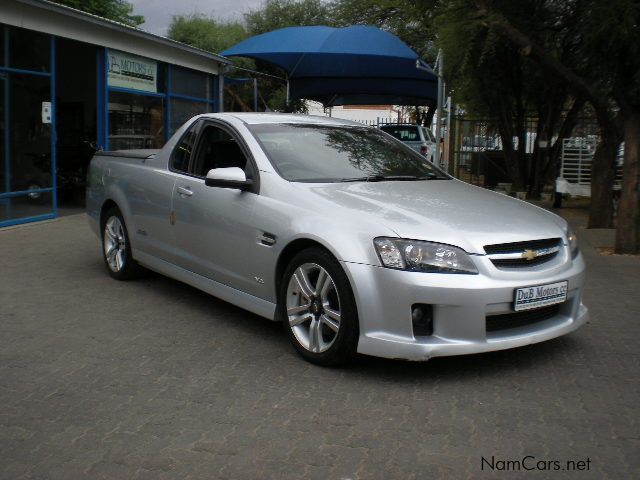

Development eventually took longer than planned, delaying the launch by 18 months. By 1991, a final body design was approved. General Motors began the development of an updated Lumina in 1989, under chief engineer Norm Sholler, planned for a late 1992 launch. In 1995, the Lumina Z34 was replaced with the Chevrolet Monte Carlo Z34. The only paint colors available for the Z34 were white, red, black, gray, silver, and light blue (added in 1993). The optional Hydramatic 4T60-E automatic transmission lowered the horsepower rating to 200 hp (149 kW 203 PS) and 0-60 times by. Performance figures included a 0-60 mph (0–97 km/h) time of 7.1 seconds, a 1/4 mile (~400 m) time of 15.5 seconds, a (limited) top speed of 113 mph, and a lateral acceleration of 0.79 g (7.7 m/s²). The Z34 also featured cosmetic changes to go along with the performance enhancements such as unique front and rear fascias, side skirts, a rear spoiler, a louvered hood, a unique steering wheel, and sport bucket seats, and an optional Bose stereo system.
Chevy lumina ss manual#
It came standard with the FE3 sport suspension package, the 210 hp (157 kW 213 PS) LQ1 V6 engine shared with the Lumina Euro 3.4 (sedan), the 5-speed Getrag 284 manual transmission, dual exhaust, and 4-wheel anti-lock brakes.

Starting in 1990, Chevrolet offered a high-performance version of the Lumina, the Lumina Z34. As a result, NASCAR received many letters complaining about the unfair advantage of Chevrolet racing an "aluminum" car. In 1989, the Lumina became the nameplate under which Chevrolets were raced in NASCAR, more than a year before the model was available to the public. The Chevrolet Lumina's first generation ended production in August 1994, making this the shortest-produced generation of the first-generation GM10 cars. While popular, the ads were soon cancelled when focus groups revealed that they remembered the Disney characters better than they remembered the car itself. One ad, showcasing the car’s spacious interior, featured cartoon hippopotami from the film Fantasia to demonstrate the Lumina's wider rear door swings which Chevrolet claimed made for easier access to the rear seat area.

As part of this promotion, characters from Disney films were featured in early advertisements for the Lumina. Ĭhevrolet signed a deal with The Walt Disney Company to make the 1990 Lumina the official car of the Disney-MGM Studios park, which opened in 1989. The coupe and sedan were installed with MacPherson front struts, while the rear suspension used Chapman struts and a transverse-mounted fiberglass leaf spring, borrowing an approach used from the Chevrolet Corvette (C4) rear suspension. GM was heavily criticized for the lack of airbags in Lumina, by 1993 the Ford Taurus, Honda Accord and Toyota Camry all came equipped with at least one front airbag. This technically satisfied US Government regulations concerning passive occupant safety requirements. These belts were connected to the upper and lower portions of the front doors, and could remain latched while allowing front passengers the ability to enter and exit the vehicle without removing them. From 2005 to 2006, GM Philippines sold the Lumina as a Chevrolet-badged version of the Buick Regal (sharing much of its body with its American counterpart).ĭale Earnhardt driving a Chevrolet Lumina in NASCAR in 1994Īirbags were not yet available at the time of introduction so seat belts were installed in the front doors as "passive restraints". From 1998 to 2013, the Lumina was marketed in the Middle East and South Africa as a Chevrolet-badged version of the Holden Commodore produced in Australia. For markets outside of North America, the Chevrolet Lumina was derived from other large GM sedans. Throughout its production, both generations of the Lumina were produced by General Motors Canada at Oshawa Car Assembly ( Oshawa, Ontario). For the 2000 model year, the Lumina was replaced by the Chevrolet Impala the model line would retain the W platform through the 2016 model year. For 1995, the second-generation Lumina was introduced, serving as a substantial exterior revision of the previous generation (the two-door coupe was renamed the Monte Carlo ). The model line was based on the front-wheel-drive GM10 platform (later designated the GM W platform), shared with Buick, Oldsmobile, and Pontiac. The first generation of the Lumina replaced the Chevrolet Celebrity and Chevrolet Monte Carlo under a single nameplate the mechanically unrelated Chevrolet Lumina APV minivan served as the successor for the Celebrity station wagon.


 0 kommentar(er)
0 kommentar(er)
